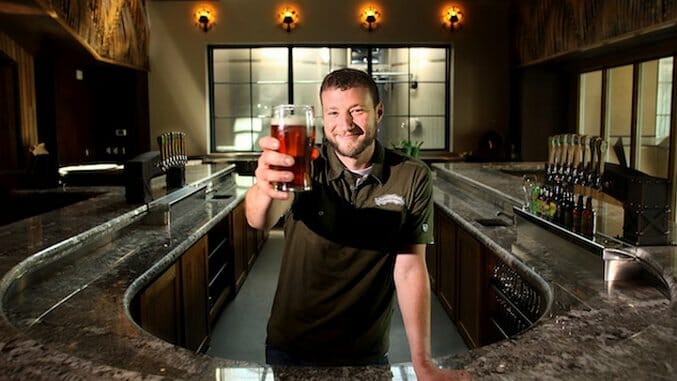6 Questions for Sierra Nevada’s Brian Grossman
Photo credit: Sierra Nevada Drink Lists Sierra Nevada
In 2016, IBU counts are listed on brewery chalkboards and bar-room menus; a beer’s bitterness and bouquet has replaced the “less filling tastes great” discussion as craft beer replaces macros across the land. Sierra Nevada, founded in 1979 in Chico, California, is among the forefathers of the hop craze, and their Pale Ale and Torpedo IPA continually take place as markers of the movement.
Sierra Nevada, though, measures success not in bitterness units, but innovation. With the launch of Otra Vez, a German-influenced gose brewed with prickly pear cactus and grapefruit, they’ve created their own lactobacillus strain to make the perfect refreshing beer, one that scales just 5 IBU. Paste caught up with Brian Grossman of their Mills River, North Carolina facility to find out what doing things “the Sierra Nevada way” truly means when it comes to developing a new nationally distributed beer.
Paste: What inspired Otra Vez? Gose is somewhat polarizing with beer drinkers.
Brian Grossman: Don’t get me wrong, IPAs are not dead by any means, but the consumer is looking for approachable, refreshing-type beer right now rather than drinking a 7-9% ABV beer. It’s great if you’re going to have one, but if you’re going to have more than one and be responsible you’re going to want something with lower ABV that still has an interesting and unique flavor.
We started making goses about six years ago. We’ve been working on this beer for a long time. It took 119 different lactic fermentations to come up with the one for Otra Vez that balances what we want with the prickly pear cactus and grapefruit and right amount of salinity. The more sour and the more salt you get is a correlation to the tartness. Balancing the profiles is important, as is a clean dry finish.
Educating people about the style of gose, I think, is going to be the larger issue. It’s a traditional light style of beer that offers huge amounts of flavor. It’s the most refreshing beer we’ve ever made. We put “gose style” on the label but if you’re not used to a sour or tart beer it’s, “What the hell is going on here?”
Paste: You said 119 different fermentations. What goes into the R&D with a beer like this? Is this the standard Sierra Nevada approach to a new beer?
Grossman: This one was pretty unique because we had so many variables. We grew 25 different strains of lactobacillus to find the one we wanted. Different yeast bacteria have different flavor attributes they add, so balancing exactly what we were looking for in our lactic culture took a lot of research. We also use experimental hop varieties in this beer, and we added Cascade because we’re Sierra Nevada and that’s what we do. It was lots of small scale to larger scale brews.
Paste: Have you released any beers that were of comparable risk?
Grossman: This is probably the most challenging beer we’ve ever made.
Paste: Do you think it’s also an outlier from your brand, making it a potential marketing challenge?
Grossman: We did 250 different beers last year so we do a lot of small scale stuff. I think it’s a new drinker who will be drinking this beer, although it’s a very craft-centered style. Most people think of us for our pale ales and IPAs but we love playing in that space. Hop Hunter was our number one beer released this year [2015], our pilsener Nooner was our number two. We can play all across the beer styles. This is not the norm for us in the general consumer mind but, for us, it’s just another fantastic beer to make.
Paste: You said Hop Hunter was one of the best received beers of 2015. Can you describe the process of that beer’s development?
Grossman: Just like the gose, if we’re going to do something we’re going to do it the Sierra Nevada way. The gose uses traditional fermentation where most people buy industrial lactic. We came up with our own system, doing it the natural way.
Same thing with Hop Hunter. Basically, all the extract on the market is from a post kiln-dried hop so a lot of the aromatics have already been removed from the process. When we looked at doing a hop extract we said we want to do it green. The hops aren’t kiln-dried yet. There’s a lot more water to remove, but by doing it you retain more hop aroma. There’s been a huge reception by the sales on it in the Hop Hunter brand. We’re very proud of it.
Paste: How was the move to Ashville. It’s been about 1.5 years now?
Grossman: Three. I moved in to build this place and we’ve been making beer for about a year and half.
It’s been great to see the warm response from local brewers. I moved here with a one-month old to the day. I needed a pediatrician, a dentist, everything you don’t comprehend. I sent an email to the local brewers and within minutes the local brewing community responded. You can’t speak enough about Southern hospitality. It’s something I was not used to. My wife, my son, and I all love it here.